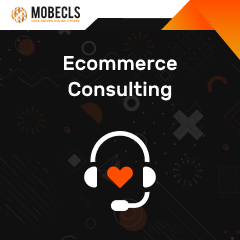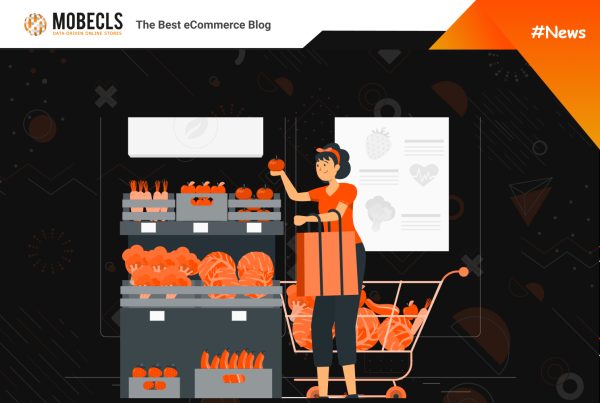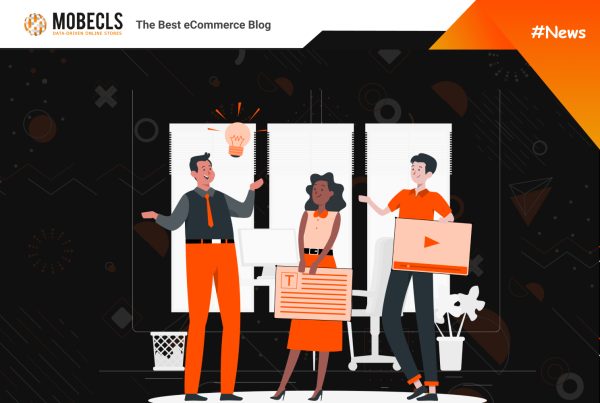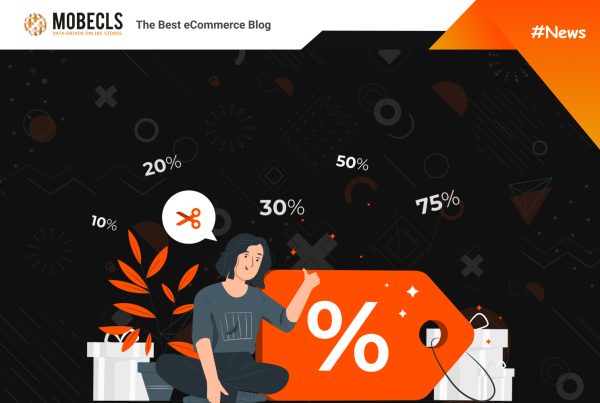The year 2020 brought with it a global epidemic, as well as several changes to the retail business and how people purchased. The acceleration of multichannel eCommerce and the attendant expectations imposed on businesses was perhaps the most significant development.
This momentum continued to grow throughout 2021. Businesses learned how to adapt to the quickly changing retail market by using the technologies and trends that defined an incredible year for multichannel eCommerce retail.
However, in order to maintain growth and stay ahead of the competition, businesses and brands must accept and adopt predicted multichannel eCommerce developments.
Multichannel eCommerce Trends to Follow This Year
Here is the complete list of 2023 multichannel eCommerce trends.
Social media commerce
The social commerce sector is expected to exceed $3 trillion in the next five years, making it a key route for 2022. Social commerce refers to eCommerce shops that promote and sell items and services using social media platforms such as Pinterest, Instagram, and TikTok.
Social commerce, a subset of eCommerce, encourages consumer participation and elicits user-generated social contributions to aid in the purchasing and selling of items and services online.
AI in eCommerce
Based on a customer’s browsing and shopping history, artificial intelligence and machine learning are good tools for forecasting shopping behaviors. AI is built on predictive analytics and demand forecasting, and the rich datasets it generates may be utilized to produce personalized and targeted suggestions on eCommerce platforms.
Augmented reality and eCommerce retail
Walking into a physical store helps customers to see how a large-ticket buy would appear in their own houses. Furniture retailers, for example, arrange merchandise in such a manner that customers can see how a lounge or bedroom setting may appear – Ikea is a prime example of this.
Of course, e-commerce cannot provide the actual environment, but it may employ technology to provide clients with the next best thing online. The easiest method to accomplish this is to show static photographs of your items, but augmented reality allows you to go one step further by providing your consumers with new experiences – and a better notion of how your products appear and feel. It allows buyers to preview things in an augmented or improved manner via phones or tablets, making products appear closer, almost tactile.
With the addition of this technology, customers will be able to view a live video of their room with the new furnishings on their phone or laptop. Augmented reality is an immersive, interactive technology that allows buyers to pick and ‘try on’ things independently. To accomplish so, they employ an augmented self to more closely portray their personal look in the online buying environment.
Augmented reality may be used to show clients how things would look in real life, whether it’s furniture in their living room or apparel on them.
Voice search
Voice search is becoming increasingly popular, with voice assistants now available on phones, home smart hubs, and televisions. The convenience of voice shopping has a direct impact on customer searches and, as a result, purchase results. To optimize their business for future sales, e-commerce organizations must be informed of changes in how consumers search and purchase using voice-enabled technologies.
In practice, this implies that, by 2023, any eCommerce site or SME must optimize SEO for both mobile and website voice searches. They should prioritize basic information such as website addresses and crucial contact information such as the firm’s physical address(es), contact number(s), and business hours when doing so.
Live-stream eCommerce
Because it is both interesting and immersive, live-stream eCommerce increases conversion. It keeps consumers viewing for longer and shortens the period between awareness and purchase. Tutorials, interviews, and behind-the-scenes techniques are popular live-stream formats.
When done correctly, live-streaming may assist to boost a brand’s attractiveness and distinction in order to attract online traffic, strengthening its position with existing consumers and attracting new ones.
Personalization
Companies may give customized offers and experiences to customers by collecting client data from numerous sources. Personalizing a customer’s eCommerce buying experience may help a company stand out from the crowd.
Customers demand assistance in locating the things they require, and a more customized experience is critical to keeping them pleased. Over 80% of consumers are more inclined to buy from companies that provide customized information and incentives. That means that in 2022, your eCommerce platform should have basic personalization options that can be adapted to your consumers’ purchase histories and buying habits.
Simple actions such as writing a personalized thank you email may convey thanks and respect while also providing additional prospects for future purchases. Follow-up emails have a substantially greater open rate than typical email marketing efforts, with an open rate of roughly 65 percent. eCommerce organizations may give a highly tailored and individual experience to each consumer by utilizing machine learning, online monitoring, and smart web technologies.
Authentic content via video
Standing out from the crowd has long been one of retail’s most difficult tasks, and really authentic content is destined to influence the way businesses to reach out to current and prospective customers. Instagram, Facebook, and Snapchat stories have exploded in popularity as shoppers’ preferred means to view original video content.
In 2023, eCommerce firms will increasingly use one-to-many videos with personalized product suggestions. This type of real material contributes to a more personalized buying experience for eCommerce customers.
Renewed focus on sustainability
The Covid-19 pandemic has intensified pressure on businesses to become truly sustainable, producing financial value while benefiting all stakeholders on a social and environmental level. Renewable energy, ecologically sound policies, and long-term sustainability are becoming increasingly popular among consumers and governments alike.
This translates into a tangible commitment to upholding stakeholder-centric ideals as well as corporate environmental and social sustainability. This trend is forcing investors to make environmental, social, and governance decisions in the stock market. Customers’ desire for companies with excellent sustainability performance demonstrates this, making it a prominent trend for 2023.
Ethical and independent business
Recent occurrences have heightened customer desire for ethical and/or independent businesses. Some consumers, on the other hand, are making efforts to avoid persons they suspect are involved in or supporting unethical activity. This creates an opportunity for companies whose brand proposition is founded on strong ethical beliefs to seek out and communicate with these customers.
Shoppers have witnessed local businesses suffer as a result of ongoing lockdowns and border closures and want to express their support. In the Covid-19 consumer marketplace, local buying has become a more conscious activity. Businesses that changed their operations as a result of the outbreak will continue to use creative techniques to attract clients who wish to support local and independent eCommerce SMEs.
 If you want to be ahead of your competitors and make sales, you need a solid online business strategy, which is vital for both eCommerce newcomers and already established businesses. If you have doubts about your eCommerce strategy or don’t have it, we’ll help you fix or create it.
If you want to be ahead of your competitors and make sales, you need a solid online business strategy, which is vital for both eCommerce newcomers and already established businesses. If you have doubts about your eCommerce strategy or don’t have it, we’ll help you fix or create it.




